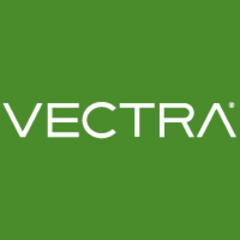
Vectra AI Valuable Features
There are many detection features available. There are extensive out-of-box detection capabilities. I cannot mention just one or two at the moment. There are multiple detection rules, and its integration with ADR and Office 365 AI is very nice, to be honest with you. It is scalable, and they have their own appliance that can handle multiple locations. You can deploy it for enterprises with multiple sites.
View full review »NF
Nawaf Fawaz
Planning& Performance Analyst at National Information Center, Ministry of Interior, Saudi Arabia
The main feature of Vectra AI that I find valuable is its focus on the user interface and its approximately two hundred algorithms based on artificial intelligence and machine learning. It allows me to create automations easily. Using this tool for automation has provided more benefits to our processes.
View full review »
Vectra AI offers a range of valuable features. Firstly, it utilizes its own AI-based tools. Secondly, it provides various dashboards that facilitate the identification of connections and can detect data exfiltration, meaning data sent from your environment to another. The tool operates based on metadata, offering comprehensive information about traffic between source and destination. Some key features include the ability to integrate with EDR or EPP solutions, allowing you to secure servers with stability issues or infections. Alternatively, you can use Active Directory to lock down infected hosts if you choose not to incorporate EPP or EDR. These features provide insights into your network, showing connection details, data transfers, VPN connections, and the number of connected EDS event hosts, among other things.
View full review »Buyer's Guide
Vectra AI
August 2025
Learn what your peers think about Vectra AI. Get advice and tips from experienced pros sharing their opinions. Updated: August 2025.
867,299 professionals have used our research since 2012.
The most valuable feature of the solution is that it only shows us the events that are actually critical. The solution is currently used as a central threat detection and response system. It ingests every bit of information from the SIEM, does AI triaging and detection, and sends incredibly high-fidelity alerts to the SIEM for investigation.
View full review »The most useful feature is the anomaly detection because it's not signature-based. It picks up the initial part of any attack, like the recon and those aspects of the kill chain, very well. We've had numerous red team and penetration exercises and, at the initial stage, when the recon is happening and credentials are used and lateral movement is attempted, our existing tools don't pick it up because it has not yet been "transformed" into something malicious. But Vectra, at that stage, picks it up 80 to 90 percent of the time. That has been one of the biggest benefits because it picks up what other things don't see, and it picks them up at the beginning when attackers are trying to do something rather than when the damage is already done.
The ability to roll up numerous alerts to create a single incident or campaign for investigation takes a bit of effort in the beginning because you'll always have misconfigurations, such as wrong passwords, that could trigger brute force and SMB-types of alerts. And you'll have genuine behaviors in your environment that tend to be suspicious, such as vulnerability assessment and scanning tools, that are not noise, per se. Even if they're non-malicious, it always tends to point to events like misconfigurations and security tools. It's been very useful in that sense, in that, once we do the initial triaging, indicating that this is a security tool, or that is a misconfiguration we need to correct, it reduces the noise quite significantly. We don't get more than 10 to 20 events, maximum, generated per day.
Vectra shows what it does in terms of noise reduction, and we can see that it is down to only 1 percent, and sometimes even less than 1 percent, of what actually requires a person to act on.
It becomes quite easy for a SOC analyst to handle things without being overburdened. And, obviously, it's at the initial stage because it picks things up before the damage happens. It's not the kind of prevention tool that has signatures and that only tells you something bad has already happened. It tells you that something is not right or is suspicious. It says there is a behavior that we have not seen before, and it has always been effective in the red team exercises that we periodically conduct.
Also, we have privileged account management, but we don't have a separate analytics tool. Still, Vectra also picks that up. This is also something that has come up during red team exercises. If there's an account that is executing an escalated privilege or running a service that it normally doesn't run, it gets flagged. It tells us about lateral movements and privilege escalations; things that constitute non-standard usage. It's quite effective at catching these. I have yet to see a red team exercise that doesn't generate any alerts in Vectra. We see a jump, and it's very easy to identify the account and the system that is the source.
It also triages threats and correlates them with the compromised host devices, because it maps both ways. It maps the host, the account, and the detection, and vice versa. You can also go to the detection and see how many affected hosts there are. In addition, if there's a particular detection, is there an existing campaign? How many hosts are also doing the same thing? These are the kinds of visibility the tool provides.
NH
Naveen Hariharan Vijaya
Security Consultant at IBM Thailand
The packet capturing feature is very useful, and as the name suggests, AI uses models to detect abnormal behavior. Some of the patent-matching algorithms they use are very advanced and detect threats at a very early stage.
For me, detections from unmanaged networks are one of the greatest values. You can identify threats from BYOD or even mobile devices, which were not handled before.
View full review »The biggest feature for us, because we are heavy Microsoft users, is its integration with Office 365. On top of Vectra AI, we use all of the Microsoft security platforms, such as Defender ATP and Sentinel. Having full integration and a central platform to look at all of the threats that are coming through from the different platforms is a huge benefit for us.
With one nice front dashboard, we can look at the high-volume threats rather than all of the noise. We do get a lot of noise as our students all own their own devices. With Vectra AI, we can look at threats in a controlled manner, which saves us an extraordinary amount of time. Even if I doubled the manpower, I doubt that I would still have the same visibility that I have with the correct security platform.
Vectra AI's Threat Detection and Response platform has done remarkably well. We're well-versed in using the security dashboard from Microsoft Defender, and we're at the stage where we are checking both. We haven't fully switched to relying on only the Vectra dashboard yet.
In terms of Vectra AI Attack Signal Intelligence for empowering security analysts within our organization, we have complete faith in the data that's coming through from Vectra. If we could also have what's happening at the front-end, that is, the firewall, then it would give us the complete security front dashboard.
We particularly like the user experience around the dashboard, which we find to be much more straightforward than the dashboard of some of the competitive products. In the grand scheme of things, we're a relatively small organization with approximately 1,000 users and a small internal security team. Compared with some of its competitors, Vectra is a really easy system to understand and use to prioritize where we need to focus our security resources.
We use Microsoft 365 and Vectra extends our ability to track attacker activity, whether that happens on-premises, in a data center, or in a SaaS environment. It provides complete coverage and visibility across our ICT estate. That was a real positive when we were going through the selection process. The simplicity of the dashboard and the categorization of alerts as low, medium, high, or critical, presents us with the potential of a security risk. We can then choose to investigate it, regardless of whether it's an on-premises or cloud-security risk. They are presented in the single-pane-of-glass dashboard, and that allows us to take the appropriate action. The detection and prioritization of attacker behaviors are extremely important.
View full review »I like the way that Vectra AI focuses on the internal network. Nowadays, most of the attackers are already inside, and they can be inside for many years before they start attacking. With normal monitoring, it's quite difficult to find them.
Vectra AI checks the behavior of the systems. It's much better than, for example, McAfee IDS, which also has some behavioral capabilities. With Vectra AI, it is possible to get some more hits.
View full review »MB
Martin Bruno
CIO at General Transmissions
The automatic filtering that they provide is valuable. The logic inside that makes some detections instead of us is very useful. We are confident that if we are just looking into it and there is nothing, nothing could happen. That's great.
It's simple to implement. It's simple to analyze. The dashboard is very smart and clean. It's very easy to check something. There are a lot of tools to analyze the detections. It's great.
View full review »As we are just beginning to use Vectra AI, I find the simplicity of implementation to be quite valuable. The UI is easy to use and when we send detection to everybody, they easily understand what we are asking at the time. The sections are very precise.
View full review »In terms of valuable features, I like the ability to record the traffic and the metadata in the traffic. I also like the ability to rewind the past and be able to understand what happened. Some of my colleagues like the ability to investigate incidents.
Vectra AI has had a positive effect on the productivity of our company's top teams. They use it a lot to understand what's going on. However, we still need to teach people how to use it to its full potential because it's quite a complicated product.
The Sidekick MDR service is quite important to our organization’s security monitoring and management. The Sidekick team is able to give us the ins and outs of what's going on with some incidents. They are able to triage and help us to focus on a particular part of detection. They also gave us advice on how to configure some parts of the product. The two people I worked with from the MDR service are really good at what they do, and it's quite nice to work with them.
View full review »Cognito Streams gives you a detailed view of what happens in the network in the form of rich metadata. It is just a super easy way to capture network traffic for important protocols, giving us an advantage. This is very helpful on a day-to-day basis.
The Office 365 detection is a great add-on. It will not only see the local traffic, i.e., the local user but also how the user is connecting to the cloud. If communication has been initiated within our network, we would capture anomalies with on-premises mechanisms. If it is a connection from the Internet to O365 SaaS services, we gain visibility through the Vectra add-on. It depends where the communication was started, but we do have a good, complete picture in a single view.
Vectra AI is really focusing on the most critical, severe detections. That is the key point of this platform for us. It gives you enough details and data, if you need it. However, for daily operations, we are just getting the priority 1 alerts that we need, and nothing more.
We use the solution’s Privileged Account Analytics for detecting issues with privileged accounts. This is important to our organization because you need to monitor and control privileged accounts.
The detection model and correlation of events, e.g., you are only having one priority event a day, go hand in hand. They have awesome detection models and very good algorithms. Out-of-the-box, you get a decent severity matrix and great consolidation. This is what has made this platform so usable to us over the last three to four years. We can rely on these detections and on its event generating mechanism that clearly focuses on the most important priority one cases.
View full review »One of the things that we didn't expect to happen was that our network team also jumped on it faster than we thought. In most cases, if it's a security tool that's working on the network part, they can also use it to find out certain flaws that have been in the system. Certain flaws, related to some legacy stuff, were already there for quite a few years, which they couldn't explain at first, but we could explain them based on the timing of certain things. For example, there were about 200 SSH connections within a night. They had seen the traffic, but they couldn't relate it to anything specifically, whereas because we saw it, we knew that it was one of our main Unix machines. We knew it was doing some kind of backup at that time. We then went to talk to the system engineer, and he could confirm that he was using a badly written script that was doing 200 connections instead of just one and sending all 200 files across it.
It's well-built, so it does its thing as a Threat Detection and Response platform for detecting and responding to threats and attacks in real-time. We use the detections that come out of Vectra, and we send them over to our SIEM solution. Especially when it comes to high alerts or alerts with high certainty and high impact, we look at them immediately, and then someone also goes through it every day to clean up. If there are certain things that we need to check, we will check them anyway. Anything that's lower on the priority list is taken care of later in the day.
View full review »It does a reliable job of parsing out the logs of all the network traffic so that we can ingest them into our SIEM and utilize them for threat hunting and case investigations. It is pretty robust and reliable. The administration time that we spend maintaining it or troubleshooting it is very low. So, the labor hour overhead is probably our largest benefit from it. We spend 99% of our time in Vectra investigating cases, responding to incidents, or hunting, and only around 1% of our time is spent patching, troubleshooting, or doing anything else. That's our largest benefit from Vectra.
We've got machine learning and AI detections, but we also have the traditional ability to create our own custom detections and rules that are important to us for compliance. When we were demoing other vendors, a large number of vendors let you make your own rules, but they don't provide their own rules and ML and AI rule engine, or they provide AI and ML, but they don't allow you to make your own rules. Vectra is very nice in that sense. We have detection rules that Vectra provides that are very common to the security industry, such as whenever there's a major event like the SolarWinds event. Those rules get built and deployed for us really quickly. We can manage our own, but then we also have the ML and the AI engine. We really like that. It is one of the few platforms that we've found to be supporting all three options.
View full review »The most valuable feature for Cognito Detect, the main solution, is that external IDS's create a lot of alerts. When I say a lot of alerts I really mean a lot of alerts. Vectra, on the other hand, contextualizes everything, reducing the number of alerts and pinpointing only the things of interest. This is a key feature for me. Because of this, a non-trained analyst can use it almost right away.
It's very efficient. It can correlate multiple sources of alerts and process them through specific modules. For example, it has some specific patterns to detect data exfiltration and it can pinpoint, in a single area, which stations have exfiltrated data, have gathered data, and from which server at which time frame and with which account. It indicates which server the data is sent to, which websites, and when. It's very effective at concentrating and consolidating all the information. If, at one point in time, multiple workstations are reaching some specific website and it seems to be suspicious, it can also create detection campaigns with all the linked assets. Within a single alert you can see all the things that are linked to the alert: the domains, the workstation involved, the IPs, the subnets, and whatever information you might need.
The key feature for me for Detect for Office 365 is that it can also concentrate all the information and detection at one point, the same as the network solution does. This is the key feature for me because, while accessing data from Office 365 is possible using Microsoft interfaces, they are not really user-friendly and are quite confusing to use. But Detect for Office 365 is aggregating all the info, and it's only the interesting stuff.
We are still in the process of deploying the features of Detect for Office 365, but currently it helps us see mailboxes' configurations. For example, the boss of the company had his mailbox reconfigured by an employee who added some other people with the right to send emails on his behalf, and it was a misconfiguration. The solution was able to pinpoint it. Without it, we would never have been able to see that. The eDiscovery can track down all the accesses and it even helped us to open an incident at Microsoft because some discoveries were made by an employee that were not present in the eDiscovery console on the protection portal from Office 365. That was pinpointed by Vectra. After asking the user, he showed that he was doing some stuff without having the proper rights to do so. We were able to mitigate this bit of risk.
It also correlates behaviors in our network and data centers with behaviors we see in our cloud environment. When we first deployed Vectra, I wanted to cross-check the behavioral detection. After cross-checking everything, I saw that everything was quite relevant. On the behavioral side, the Office 365 module can alert us if an employee is trying to authenticate using non-standard authentication methods, such as validating an SMS as a second factor or authenticating on the VPN instead of the standard way. The behavioral model is quite efficient and quite well deployed.
View full review »Vectra AI can bring the ability to detect intrusion on the network more so than legacy IDS tools. It goes beyond just doing sample packet capture as Corelight does and provides value to the customer regarding their reporting and what the tool is doing.
View full review »The fact that we get the visualization of what's happening on our network, which is a way of improving our security in-depth is most valuable. That's because with the information we get out of Vectra, we know how to adapt and modify things in our network.
Regarding Vectra AI attack signal intelligence, it is providing us with information on how to adapt or protect ourselves against certain attack vectors. This feature is quite helpful.
View full review »The platform is well-designed around the quadrant. We know quickly how to investigate, and the detections are clear. I like Vectra AI's integration with Active Directory and the fact that it's easy to take in hand.
MG
Maik Gonstala
Network Engineer at a university with 1,001-5,000 employees
We often use the new feature to create PCAP files from the whole data traffic. It makes it much easier to find network problems such as whether the server is responding to a request. It has nothing to do with security, but it helps a lot to find other problems.
Vectra AI helped improve our mean time to identify. For example, the Sophos client doesn't recognize anything, and without Vectra AI, we wouldn't be able to identify problems. It does it quickly.
We use the Sidekick MDR service. It's very important to us because it gives us another layer of security and a second pair of eyes. We have learned a lot from the Sidekick.
FU
Farman Ullah
SOC Administrator at The National Commercial Bank
What I like best about Vectra AI is that it alerts you about suspicious activities.
View full review »DW
Dave Wallace
Operations Manager at a healthcare company with 51-200 employees
An attractive thing about Vectra AI is the AI component that it has over the top of the detections. It will run intelligence over detections coming across in our environment and contextualize them a bit and filter them before raising them as something that the IT team or SOC need to address.
While the device itself is deployed on-prem, the hybrid nature of what it can monitor is important to us.
Its ability to group detections for us in an easier way to better identify and investigate is beneficial. It also provides detailed descriptions on the detection, which reduces our research time into what the incident is.
There are also some beneficial features around integration with existing products, like EDR, Active Directory, etc., where we can get some hooks to use the Vectra product to isolate devices when threats are found.
On a scale of good to bad, Vectra AI is good at having the ability to reduce alerts by rolling up numerous alerts to create a single incident or campaign for investigation. My frame of reference is another product that we had beforehand, which wasn't very good at this side of things. Vectra AI has been a good improvement in this space. In our pretty short time with it so far, Vectra AI has done a lot to reduce the noise and combine multiple detections into more singular or aggregated alerts that we can then investigate with a bit more context. It has been very good for us.
There is a level of automation that takes place where we don't have to write as many rules or be very specific around filtering data. It starts to learn, adapt, and automate some of the information coming in. It works by exception, which is really good. Initially, you get a little bit more noise, but once it understands what is normal in your environment, some of the detections are based on whether an action or activity is more than usual. It will then raise it. Initially, you are getting everything because everything is more than nothing, but now we are not getting much of that anymore because the baseline has been raised for what it would expect to see on the network.
We use the solution’s Privileged Account Analytics for detecting issues with privileged accounts. Privileged accounts are one of the biggest attack vectors that we can protect ourselves against. This is one of the few solutions that gives you true insight into where some of those privileged accounts are being used and when they are being used in an exceptional way.
We have found that Vectra AI captures network metadata at scale and enriches it with security information. We have seen that data enriched with integrations has been available and implemented. This comes back to the integration of our EDR solution. It is enriching its detection with existing products from our EDR suite, and probably some other integrations around AWS and Azure. In the future, we will see that improve even further.
One of the core features is that Vectra AI triages threats and correlates them with compromised host devices. From a visibility perspective, we can better track the threat across the network. Instead of us potentially finding one device that has been impacted without Vectra AI, it will give us the visibility of everywhere that threat went. Therefore, visibility has increased for us.
View full review »Within Vectra, multiple models exist, including an AI model which is very important. Vectra is very compatible with various cloud providers, such as Amazon and Azure AD. This is helpful as customers often migrate their network infrastructure to the cloud.
Additionally, Vectra provides managed detections and responses, enhancing a company's network detection capabilities. The platform also has attack signal intelligence to identify attackers based on their tactics and techniques, preventing them from compromising critical network devices. So it acts as a detection platform, essential for halting potential threats, including clouds like Amazon and Microsoft 365.
View full review »HB
Hugo Bertrand
Analyste SOC at LGM Group
The feature I found most valuable is the recording because it's easy to analyze logs that I need to analyze.
View full review »We use the Threat Detection and Response platform, and it's quite good at detecting and responding to threats and attacks in real-time. I really like the UI experience because it's simple to use, and we get quite a lot of information very quickly.
Some valuable features of Vectra AI are that it is very intuitive and that there are only a small amount of false positives. Therefore, it's an effective solution.
Another benefit that is unrelated to security is that it allows us to see misconfigurations or things that should not be happening in terms of compliance.
As SOCs, we concentrate on the OS side, and with Vectra AI, we can now see the network from an endpoint point of view. It gives us new alerts and does bring some work because we now have more visibility. However, it's opening up a wide range of things for us.
DH
David Heed
Security Center Coordinator at a comms service provider with 1-10 employees
It works over the hours when an analyst is not available, so the work keeps going. It can help you prioritize certain traffic patterns and things that you need to handle.
It is a good system that goes hand in hand for both junior and senior analysts. I see it as a nice add-on there.
View full review »The hosts are critical hosts, which are really good when used to look up things as fast as you can because these could be very risky situations. Furthermore, within detections, we try to clean up a lot of things that are low in priority. It is same thing for the accounts within Office 365: Everything that is critical has to be solved as fast as possible.
The triaging is very interesting because we can do more with less work. We have more visibility, without too many false positives. It is a work in process because there are a lot of clients in the network, and everything has to be researched to see if it is valid, but most alerts and detections are solved with a bit of triaging.
The interface is very intuitive and easy to use. It gives a good overview, and it is important to understand what is happening on the network.
The integration within our virtualization infrastructure allows us to see the traffic that is going between virtual machines, even within our host. That gives us a lot more insights.
View full review »JV
John Vicencio
Cyber Specialist, Forensics at Richemont
The most valuable features are Cognito Recall and Cognito Detect.
I didn't think Vectra AI actually provided this functionality, but essentially it gives you access, with Recall, to instant visibility into your network through something like a SIEM solution. For us, being able to correlate all of this network data without having to manage it, has provided immediate value. It gives us the ability to really work on the stuff where I and my team have expertise, instead of having to manage a SIEM solution, as that is a whole undertaking in itself. It has expedited all our investigations and hunting activities because it's all there and available, and they manage it.
We use their Privileged Account Analytics for detecting issues with privileged accounts. Given that we're a global company with over 35,000 machines, the machine learning-type of analysis or visibility into baselining behavior in privileged accounts in the environment is something Vectra does amazingly. It's amazing the visibility that I get. Not only is it providing a baseline to understand the behaviors of how IT, for example, is acting globally and in all these different regions, but it also gives me an ability to get much more granular and understand more of the high-risk behaviors, rather than the behaviors that we expect from IT. Usually, malware attackers and normal IT activities look the same. It's about discerning what's outside of baseline, and Vectra does this amazingly, incorporating not only the account privileges but the context of what these accounts are doing on hosts, on top of that.
The solution also provides visibility into behaviors across the full life cycle of an attack, visibility into the attacker kill-chain. I personally do red-team testing and threat hunting and, in addition to the detections which Vectra has already caught, it's been able to outline a full attack from an external red team that came in and tested with us. Not only did it show exactly what they did, but it was even able to provide a profile of the type of behavior that this exhibited, which was an external actor. In my own attacks that I've conducted on the network, it's been able to detect everything and properly align it in a kill-chain fashion. That is extremely helpful in investigations because it helps align the host data a little bit when you have visibility of the network in such a way.
Vectra also triages threats and correlates them with compromised host devices.
View full review »One of the most valuable features of the platform is its ability to provide you with aggregated risk scores based on impact and certainty of threats being detected. This is both applied to individual and host detections. This is important because it enables us to use this platform to prioritize the most likely imminent threats. So, it reduces alert fatigue follow ups for security operation center analysts. It also provides us with an ability to prioritize limited resources.
It aggregates information on a host and host basis so you can look at individual detections and how they are occurring over time. Then, you can have a look at the host scores too. One of the useful elements of that is it is able to aggregate scores together to give you a realistic view of the current risk that the host plays in your network. It also ages out detections over time. Then, if that host is not been seeing doing anything else that fits into suspicious detection, it will reduce its risk score and fall off of the quadrant where you are monitoring critical content for hosts that you're trying to detect.
When you are analyzing and triaging detections and looking for detection patterns, you are able to create filters and triage detections out. Then, in the future, those types of business usual or expected network behaviours don't create false positive triggers which would then impact risk scores.
Without the detection activities that come from Vectra, we wouldn't have been able to identify the true cause of an event's severity by relying on other tools. This would have slipped under the radar or taken a dedicated analyst days to look for it. Whereas, Vectra can aggregate the risk of multiple detections, and we are able to identify and find them within a couple of hours.
View full review »The core product provides excellent visibility, but my favorite feature is Vectra Recall. It enables us to use archived data to address current or active threats that may not have been detected.
I have yet to see real-time attacks, and I'm the kind of person who needs hands-on experience. At the same time, they are triggering alerts on our regular scanning tools like Nessus. It triggers if they are noisy enough. Vectra's Threat Lab showcases this, but I need a case to work with to know from experience.
The Vectra AI feature I find the most valuable is Cognito. It just gives us so much detail about the malware putting our environment in danger.
View full review »The administrative privilege detection feature is the most valuable feature. The admin accounts are often highly accessible to the high-risk component of the environment. If those accounts are compromised or are being used in a suspicious manner, those are high-fidelity events for us to look into.
Its ability to reduce alerts by rolling up numerous alerts to create a single incident or campaign for investigation is very useful. Given that we are not a dedicated SOC environment, having to trawl through several false positives is not something that we have the capacity for.
Cognito theoretically provides us with visibility into behaviors across the full lifecycle of an attack in our network beyond just the internet gateway. It has not been fully tested. But hypothetically it would give us full visibility into your attack chain.
We use privileged account analytics for detecting issues with privileged accounts.
MD
Mark Davies
Security Operations Specialist at a tech services company with 1,001-5,000 employees
The dashboard gives us a scoring system that allows prioritization of detections that need attention. We may not necessarily be so concerned about any single detection type, or event, but when we see any botnet detections or a brute force attack detections, we really want to get on top of those.
View full review »MH
Headofinfosec82347
Head of Information Security at a outsourcing company with 1,001-5,000 employees
What is pretty good is the unknown unknowns. It's the anomalies to the norm and the intelligence behind it that helps us to dig through a mountain of data and find the stuff that's important to us.
It allows us to understand what our normal traffic is, then pulls out the anomalies for us. For instance, a recent use case of it would be that it suddenly picked up that a file transfer was happening out of our estate that we weren't aware of. It hadn't been there before. There was a file transfer that suddenly appeared, that was actually in our estate that hadn't been there before. We would never have been able to see that normally, it's just that Vectra AI saw it. It was okay, it was going to a third-party and it allowed us to investigate it and find it but we would never have seen that without a notification. It understands what should be happening and then usually says "This isn't normal," and it allows us to flag it up and dig deeper into that.
It is very good at reducing alerts by rolling up numerous sellers to create a single incident or campaign for investigation. Although it doesn't reduce, it actually increases our alerts because we wouldn't have seen the stuff in the first place, but when it does create an alert, it pulls all investigative information together. We're not getting hundreds of alerts, we're getting alerts that contain all of the relevant components.
Vectra AI captures network metadata at scale and enriches it with security information. Although, we don't make the most of that, but we've never had a problem with its captures and it captures the correct data for what we want it to do. I think we could be using it better.
The information affects investigations by our security team by allowing them to be more effective and quicker in their investigations.
Vectra AI provides visibility into behaviors across the full life cycle of an attack in our network, beyond just the internet gateway. Although, we found it's flagging up early, so it's not developing to that further stage of that because it's flagging up at an early stage.
Its ability to reduce false positives takes quite a bit of tuning. We've had to put a lot of effort into tuning out false positives, so that's something that we've had to invest our time into. Obviously it's getting better and better as time goes on, but we still have to spend time tuning it.
We've seen our tuning has lessened those processes, but we're still getting more than we would want. That's probably some of our fault. It could be some issues with the way it's set up in certain areas. But, once we tune them out, they're staying tuned out.
It hasn't reduced the security analyst workload in our organization but that was never the purpose of it for us. It's an additional tool in our armory, so it hasn't reduced our workload, but it's made us more efficient.
It makes the team more efficient in speed of response. I would say it makes them more efficient in the breadth of their coverage of what they can respond to. It makes us have a more proactive response to incidents.
It has reduced the time it takes to respond to attacks. That comes back to the proactive point. It makes us able to lower down in the kill chain. We can react now, rather than reacting to incidents that happened, we can see an instant, in some cases, as it's being implemented, or as it's being launched.
It's not all attacks, but I would say that it's a shift less on the material chain. It's things that we might not even have spotted if it hadn't been for Vectra AI, so it's difficult to know how we would quantify that as an amount.
View full review »One of the most valuable features is all the correlation that it does using AI and machine learning. An example would be alerting on a host and then alerting on other things, like abnormal behavior, that it has noticed coming from the same host. It's valuable because we're a very lean team. It helps reduce workload on our team daily by performing tasks that we don't have to do manually.
It does a really good job of reducing alerts by rolling up numerous alerts to create a single incident or campaign for investigation.
It also does a really good job detecting things. Some things it detects are not really threats, but it is stuff that it should be detecting, even though the behavior, sometimes, isn't malicious.
I find the network artificial intelligence and machine learning to be most valuable because we have also significantly increased the amount of traffic that we inspect. This has kind of lowered the burden of creating ways to drink from that fire hose of data. The artificial intelligence and machine learning help bubble up to the top things that we should go look at which are real deviations from the norm.
I would assess the solution’s ability to reduce alerts by rolling up numerous alerts to create a single incident or campaign for investigation very highly. Rather than relying on signatures and a human to look if, "Host X has hit these four different signatures," which is probably an indicator of a fairly high confidence that something's not right, the analytics, artificial intelligence, and machine learning in this product tie those events together. It also looks for new events that are out of the ordinary, then gathers those together and tells us to look at specific hosts. This is rather than an analyst having to sift through a bunch of signature hits, and say, "Oh, this host needs to be looked at."
Also, there is a much lower operational burden of maintenance. We used to use open source monitoring tools, which are very good, but they take a lot of work to maintain and leverage. We really like the commercial off the shelf type of approach of the software, not brewing our own.
It gives you a risk score of everything that you just found. The quadrant approach is useful because if there are things in the lower-left quadrant, then we don't necessarily need to look at them immediately. However, if there's something with a high impact and high risk score, then we will want to start looking at that right away. We found this very valuable as part of our investigative analysis approach.
The solution’s ability to reduce alerts by rolling up numerous alerts to create a single campaign for investigation is very good. Once it starts adding multiple detections, those are correlated to a campaign. Then, all of a sudden, this will increase the risk score. I've found that approach helps us with understanding exactly what we need to prioritize. I find it very useful.
The amount of metadata that the Recall solution produces is enormous. What we can find from that metadata is exceptional. Once you get to know how to use the tool, it's much simpler and more intuitive to use when finding information than using a traditional SIEM, where you have to build SQL type commands in order to retrieve data. So, I do find it very valuable.
View full review »The solution's ability to reduce alerts, by rolling up numerous alerts to create a single incident or campaign, helps in that it collapses all the events to a particular host, or a particular detection to a set of hosts. So it doesn't generate too many alerts. By and large, whatever alerts it generates are actionable, and actionable within the day. With the triaging, things are improving more and more because, once we identify and investigate and determine that something is normal, or that it is a misconfiguration and we correct it, in either of these two instances, gradually the number of alerts is dropping. Recently, some new features have been introduced in the newer versions, like the Kerberos ticketing feature. That, obviously, has led to an initial spike in the number of tickets because that feature was not there. It was introduced less than a month back. Otherwise, the tickets have been decreasing, and almost all the tickets that it generates need investigation. It has very rarely been the situation that a ticket has been raised and we found that it was not unique information.
Also, we have seen a lot of detections that are not related to the network. Where we have gained extra value in terms of the internet is during data exfiltration and suspicious domains access.
The detections focus on the host, and the host's score is dependent on how many detections it triggers. We have seen with many of our probing tools, without triaging, that these hosts pretty quickly come into the high-threat quadrant. Its intelligence comes from identifying vulnerable hosts along with the triaging part. That's something that we have seen.
We mainly use it for the detection types, checking dark IPS or command-and-control traffic.
We bought Recall so we can have more information. Recall is an addition onto Vectra. We haven't enabled Recall yet, but we will. So, if there is an incident, we can investigate it a bit further with Vectra devices before going into other tools and servers. This gives us the metadata for network traffic. So, if we have a detection, we can check with Recall what other traffic we are seeing from that device, if there is anything else. It's mainly a quick and dirty way of looking at it and getting some extra information to see whether it's malicious.
We found that the solution captures network metadata at scale and enriches it with security information. This is one of the reasons why we added Recall, so the alert gives us information on where we need to look, then we can investigate a bit further. For example, a certain device is sending data to command-and-control server, then we can investigate whether that is really happening or just a false alarm with the metadata in Recall. It makes it easier to find out.
View full review »It gives us the point of where something is happening, which is the key thing for us. (I know that there is a back-end recall, which probably gives a lot more data, but we don't use that.) We then leverage our SIEM product to provide us logs from those specific sources that it's talking about, giving us that information. It is the accuracy of: It is happening here and on this particular host, then it's going to here to this particular host. It's that focus which is probably the most advantageous to us.
The logic behind Vectra's ability to reduce alerts by rolling up numerous alerts to create a single incident or campaign for investigation grows with severity, as there are additional alerts around that particular host. This is a useful feature rather than spamming alerts. But, we've never really had an issue with a lot of alerts. We really do triage our alerts quite well and have a good understanding of what does what.
One of the key advantages for us is we define a 24/7 service around it. We use far more of Vectra alerts than we do with our SIEM product because we understand that when we get an alert from Vectra we actually need to do something about it. You can't really say you don't get false positives, as the action has happened. It's whether we consider that action as a concern rather than a SIEM that sort of gives you a bit of an idea of, "That may be something you're interested in." Whereas, Vectra says, "This has happened. Is this something you would consider normal?" I think that's the bit that we like. It just says, "Is this normal behavior or isn't this normal?" Then, it's up to us to define whether that is or isn't, which we like.
The solution provides visibility into behaviors across the full lifecycle of an attack in our network, beyond just the internet gateway, because we do east-west traffic. So, it looks at the entire chain across there. We're fortunate enough not to be in a position that we've seen a meaningful attack. When we do have pen testers come in, we can see quite clearly how they pick traffic up and how it develops from a small or medium alert to go to higher severity, then how it adds all those events together to give more visibility.
The solution does a reasonable job of prioritizing threats and correlating them with compromised host devices. We use that as how we react to it, so we leverage their rating system. We are reasonably comfortable with it. At the end of the day, we actually spend a lot of time and effort to tweak it. It's never going to be right for every company because it depends on what your priorities are within the company, but we do leverage what they provide. If it is a high, we will treat it as a high, and we will have SLAs around that. If it's a low, we'll be less concerned, and the events that come out pretty much lead to that. The events that we see and the type of activity going on, it makes sense why it's a low, medium, or high. Just because a techie has done a port scan, that doesn't mean we need to run around shouting, "Who has done this?"
When we originally put it in, it was really quite interesting to see. Picking up the activities from the admin user and what they were doing, then going, "By the way, why have you done that?" Then looking at a scan and going, "Well, how did you know that?" So, it's sort of cool to pick up that type of stuff. We tend to trust what it tells us.
View full review »It's easy to manage, and I love the UX. It's very well designed. When we are looking for something, it's quite easy to find it.
Most of their use cases, including deployment, are managed by the tool itself, requiring less manual input from our team.
View full review »Vectra AI generates relevant information.
View full review »Buyer's Guide
Vectra AI
August 2025
Learn what your peers think about Vectra AI. Get advice and tips from experienced pros sharing their opinions. Updated: August 2025.
867,299 professionals have used our research since 2012.























